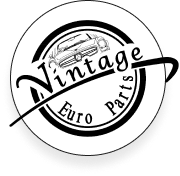Top Tools Every Vintage Car Restorer Should Own

Restoring a classic automobile is both an art and a science. For any vintage car restorer, having the right tools is essential—not only to bring a vehicle back to life but also to do so with precision and care. The process often involves everything from detailed mechanical work to delicate cosmetic repairs. Whether you’re a seasoned professional or a passionate hobbyist, equipping your workshop with the right tools can make the difference between a frustrating project and a rewarding masterpiece.
In this article, we’ll explore the top tools every vintage car restorer should own. We’ll cover a mix of basic must-haves, specialized equipment, and advanced tools that can elevate your restoration projects.
🛠️ Basic Hand Tools
No vintage car restorer should begin a project without a reliable set of vintage car parts and hand tools. These are your everyday workhorses for disassembly, assembly, and adjustment.
Socket Set (Metric & SAE)
Many classic European cars use metric fasteners, while American cars often require SAE sizes. Having both ensures you’re covered.Combination Wrenches
A good set of open-end/box-end wrenches is vital for tight spaces.Screwdrivers
Both flathead and Phillips in various sizes are necessary. Opt for quality brands with hardened tips.Pliers
Include standard, needle-nose, locking pliers (Vise-Grips), and snap-ring pliers.Torque Wrench
Essential for reassembling engine components or chassis parts to the proper specifications.
⚙️ Specialized Restoration Tools
Restoring vintage vehicles means dealing with aged, often delicate components. The following specialized tools can make this job much easier:
Impact Driver
Useful for loosening stubborn, rusted screws without damaging them.Pullers (Gear & Steering Wheel Pullers)
Removing gears, pulleys, or steering wheels can be nearly impossible without the proper puller.Panel Removal Tools
Helps you safely remove interior trim panels and delicate body clips without breakage.Body Hammer and Dolly Set
For reshaping panels and smoothing out dents.Brake Bleeder Kit
Makes bleeding brakes a one-person job—an essential for maintaining vintage braking systems.Engine Hoist (Cherry Picker)
If you plan to remove or install engines, an engine hoist is indispensable.
🧰 Measuring and Diagnostic Tools
Precision is everything for a vintage car restorer. These tools help ensure accuracy:
Digital Caliper
Perfect for measuring component tolerances and ensuring proper fit.Feeler Gauges
Critical when adjusting valve clearances, setting points, or fitting bearings.Compression Tester
Quickly assesses the health of an engine’s cylinders.Multimeter
A must-have for diagnosing electrical issues, testing continuity, and checking voltages.Timing Light
Essential for setting ignition timing on vintage engines with distributors.
🖌️ Tools for Cleaning and Surface Preparation
Surface preparation is a crucial step in any restoration project. The right tools help you clean and prep parts for painting or reinstallation.
Parts Washer
A dedicated parts washer allows you to clean greasy or grimy components safely and efficiently.Wire Wheel / Bench Grinder
Great for removing rust and cleaning metal surfaces.Sandblaster (Cabinet or Portable)
Ideal for cleaning small parts, removing old paint, and prepping surfaces for refinishing.Sanding Blocks & Abrasives
For prepping body panels and smoothing primer and paint.
🏎️ Paint and Finishing Tools
Every vintage car restorer dreams of a mirror-finish paint job. The following tools are essential for achieving professional results:
Spray Gun & Air Compressor
Investing in a high-quality HVLP (High Volume Low Pressure) spray gun ensures smooth paint application.Respirator
Never paint without proper respiratory protection.Paint Booth (or Clean, Ventilated Space)
Keeping dust and debris out of your paintwork is critical.Polisher / Buffer
Achieve a flawless finish and bring out the shine after painting.Assorted Polishing Pads & Compounds
Used to refine the finish and eliminate swirl marks or imperfections.
🧑🏭 Welding and Fabrication Tools
Restoring vintage cars often involves repairing or fabricating metal parts. Having basic welding and fabrication tools can save time and money:
MIG Welder
An excellent all-around welder for beginners and pros alike.TIG Welder
For precise welding on thin sheet metal and aluminum.Angle Grinder
A versatile tool for cutting, grinding, and smoothing metal.Metal Brake
Useful for creating bends in sheet metal for patch panels and custom fabrication.Sheet Metal Shears
Cuts sheet metal cleanly without distortion.
🔍 Storage and Organization
A vintage car restorer needs to keep tools, fasteners, and parts well-organized to maintain efficiency:
Tool Chest or Cabinet
Keeps your hand tools neatly organized and easy to find.Parts Bins & Trays
Essential for keeping track of small parts during disassembly.Labeling System
Helps you identify and categorize components for easy reinstallation.Workbenches with Vise
Provides a stable surface for detailed work.
🚘 Optional Advanced Tools
For the serious vintage car restorer aiming to tackle full-frame-off restorations or concours-level projects, these advanced tools can be game changers:
Rotisserie
Allows you to rotate the entire car body for easy access to the underside during restoration.Paint Thickness Gauge
Measures the thickness of paint to verify even coverage or detect hidden bodywork repairs.Ultrasonic Cleaner
Perfect for cleaning carburetors, fuel injectors, and small precision components.OBD1/OBD2 Scanners
While most vintage cars predate OBD2, having a scanner that works with early electronic systems is useful for diagnosing later classic models.
Final Thoughts
A well-equipped workshop is a key asset for any vintage car restorer. While passion and patience will drive your restoration success, the right tools will make the journey smoother, safer, and more enjoyable.
Whether you’re restoring a 1950s Mercedes-Benz 190SL, a 1960s Mustang, or a 1970s Porsche 911, investing in quality tools is one of the best ways to ensure your hard work produces stunning results.
Remember: start with the basics, add specialized tools as needed, and gradually build your collection. Restoration is an ongoing learning experience—both in craftsmanship and in assembling the right toolkit.

